Introduction
It all started with the fact that having started repairs in the apartment, I decided to radically increase the screen size for watching movies. Possessing a 40 "TV at the time, I aimed at the diagonal of 65." But he began to delve into the topic, read the reviews and gradually went to the projectors as a real and inexpensive (from the price per inch) alternative to TVs.
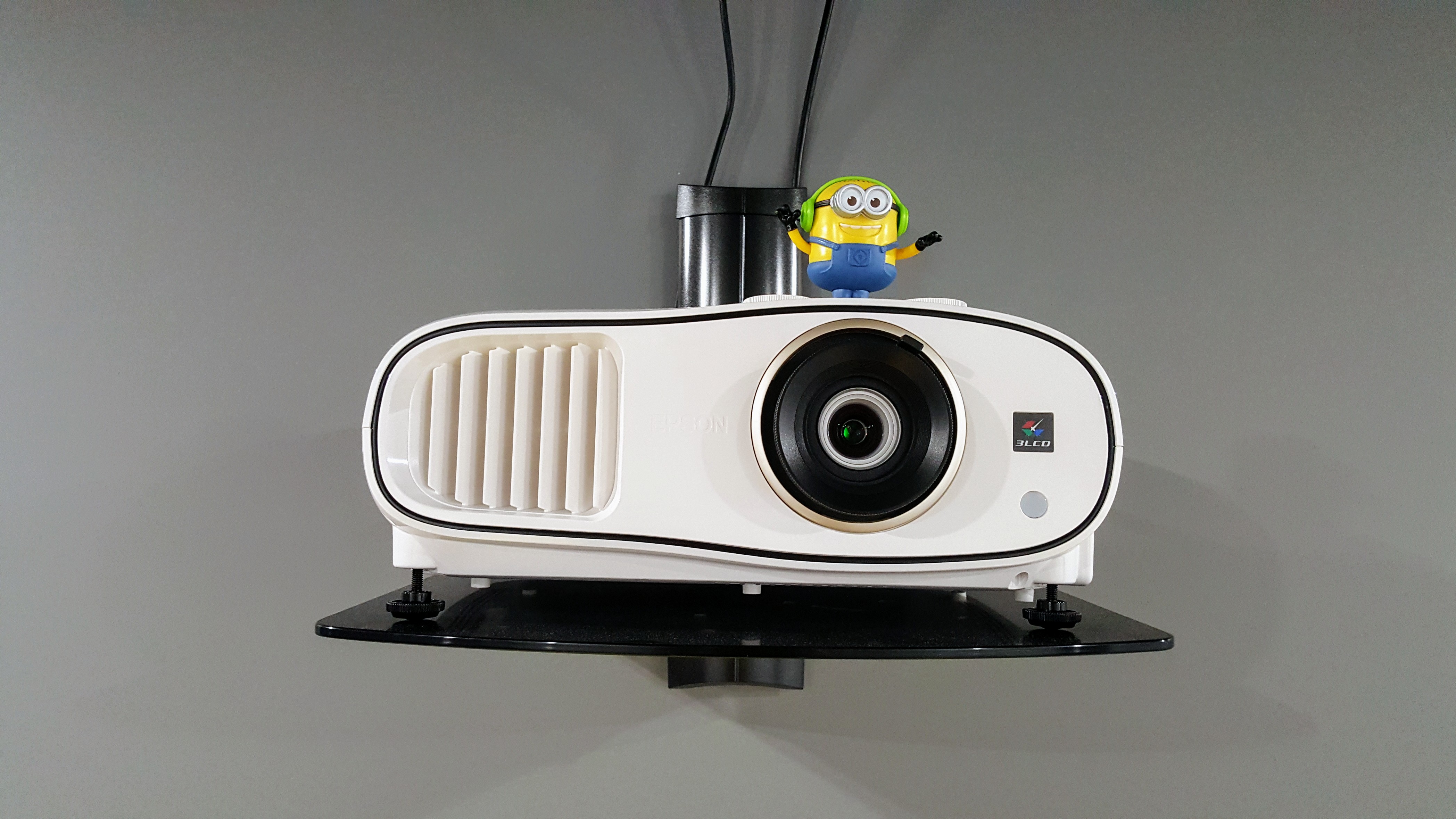
Next, I will describe the experience of communicating with this class of devices and answer many questions that a potential user may have, since this topic is poorly covered in runet and it is almost impossible to find detailed articles for real users.
First pancake
One of the most popular entry-level models in our country, and throughout the world, is the Epson EH-TW5300. It is believed that this is an excellent acquisition in its price range, giving a good picture for your money. That she was bought by me in June of this year for 40tr. Before describing the impressions of this model, you should show the room in which I watch movies.
The projection is displayed on a light gray matte wall:

To the left of the "screen" of the same color wall (I will repaint):
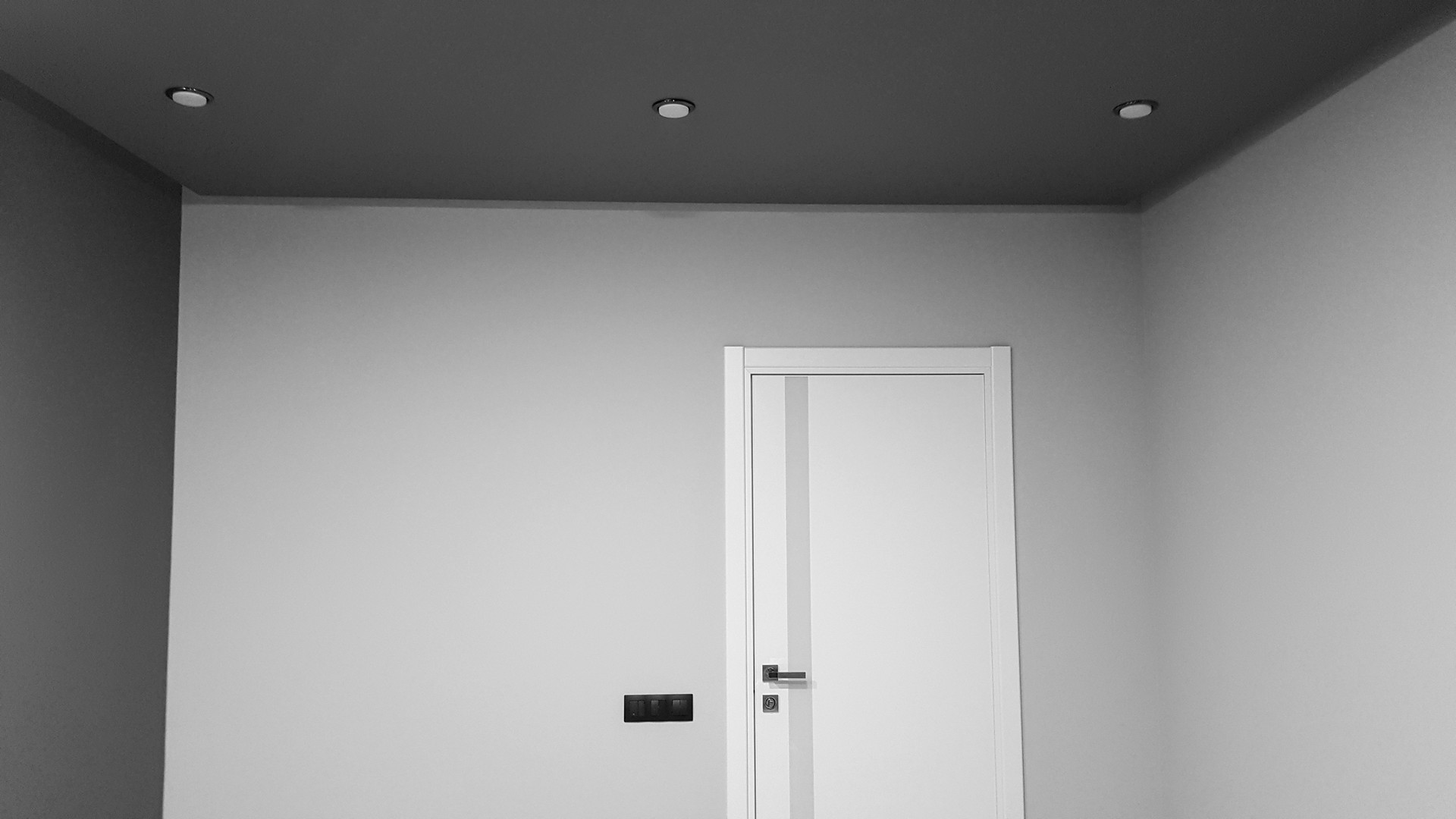
To the right of the screen are dark gray blackouts:

The opposite wall to the screen is a dark gray matte (on photo 6700):
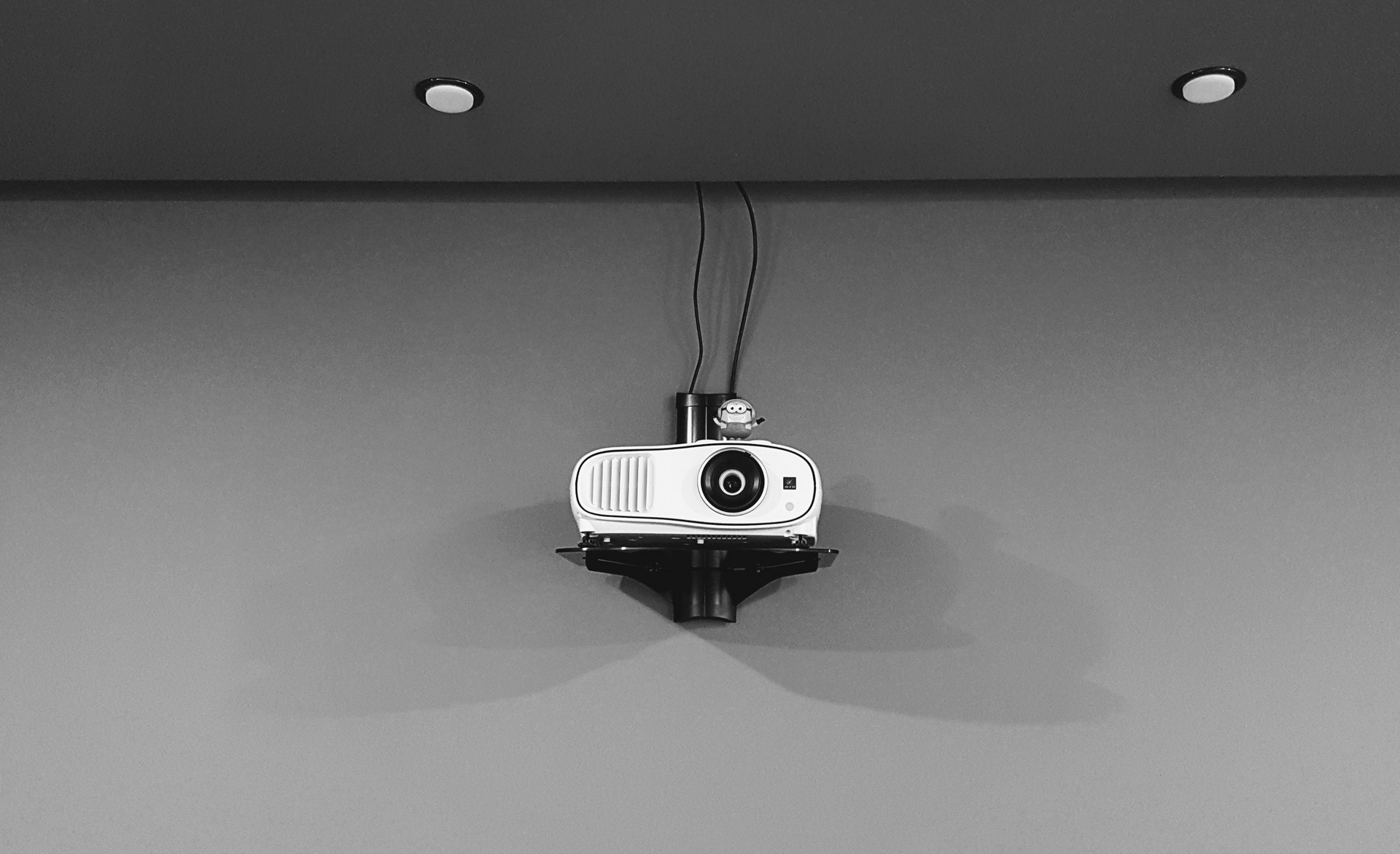
Dark gray ceiling, painted recently. Repainting the ceiling from white to dark gave a huge increase in image quality. The reflected light has become much less, and the contrast of the picture has also improved accordingly (on photo 5300):

The room is not perfect Batcave, as reviewers of foreign sites say. But to repaint the room in black or sheathe black velvet is not ready morally. As a result, setting 5300 was very unhappy with the image quality. The contrast of this projector is 400: 1, which is catastrophically low for normal viewing of movies in complete darkness. Black color is absent in principle, because the whole picture looks as if covered with white veil. And dark scenes lose much in the details. However, we must pay tribute, for all other parameters, the projector is quite decent. Good colors, sharpness and brightness. In addition, it is short-focus and 295 cm from the distance from the lens to the wall. turned out a projection of 106 ".
The projector is noisy even in Eco-mode and in the absence of loud sounds, its work is well audible, as is the automatic diaphragm. But you can put up with all this, which cannot be said about the low contrast of the image. In the end, having fiddled with the settings and not having achieved anything good, after 2 months it was decided to sell it. Sold literally in one day on the famous site for 30tr.
There is always a choice
I’ll start with a short excursion into the Epson line of home projectors:
5 series - the initial level, the representative of which is 5300.
Epson EH-TW6700 6 series - medium level, differs from the fifth one by a significantly greater contrast, the presence of a large range of lens shift and zoom. High-quality optics and quieter work. There is also a model 6800, which is distinguished by a more accurate factory setting of colors.
Epson EH-TW7300 Series 7 - differs from the 6th by the presence of motorized, improved optics and support for 4K content (not real 4K is displayed, but emulation using software tweaks).
Epson EH-TW9300 Series 9 - the initial Hi-End level. All the bunches of the seventh series, plus an excellent black level and contrast (another type of matrix), comparable to the more expensive JVC projectors for 5-6 thousand dollars. But for the realization of all the potential you need an ideal black room. Not everyone can set aside a separate room for the cinema, and few people will dare to alter a living room in a black crypt.
There are projectors in the Epson lineup for 500+ mp, but I did not consider them.
After a lot of thought, the sixth series in the Epson 6700 face was chosen. I don’t need motorized optics for the extra 50tr in the seventh series, but I won’t be able to realize the ninth one in my room, and it costs twice as much. Well, the focal length of expensive models is longer, which is critical in my conditions (room width is 327 cm).
Happinnes exists
Buying 6700, I certainly expected an increase in image quality, but not so much. Speaking frankly, at first, I even screamed with delight. A completely different level of image display, quality (I declare quite responsibly) is comparable
with lcd tv in most situations. Somewhere better, somewhere (in the most dark scenes) worse. But while viewing the image quality does not distract from viewing and does not make you think about any shortcomings of the projector. It is most important!
I will give a couple of examples made on the phone. I will make a reservation that the photograph, of course, introduces its own corrections and changes the real picture. But to draw approximate conclusions is quite possible.
Comparison with Samsung TV 40 ". Contrast shot:

Light frame with the sky:

Dark frame:

Connection and installation
The projector is connected to a PC with a 15 meter HDMI cable version 1.4 High Speed, costs around 1.5 tr. I tried to connect a laptop with a 1.5m cable - the picture is the same. That is, the fall in the quality of the picture because of the long cord, I did not notice.
If 5300 (weight 3.5kg) was hung on the ceiling bracket, then for 6700 (weight 7kg) I bought a wall shelf to precisely set the horizon.
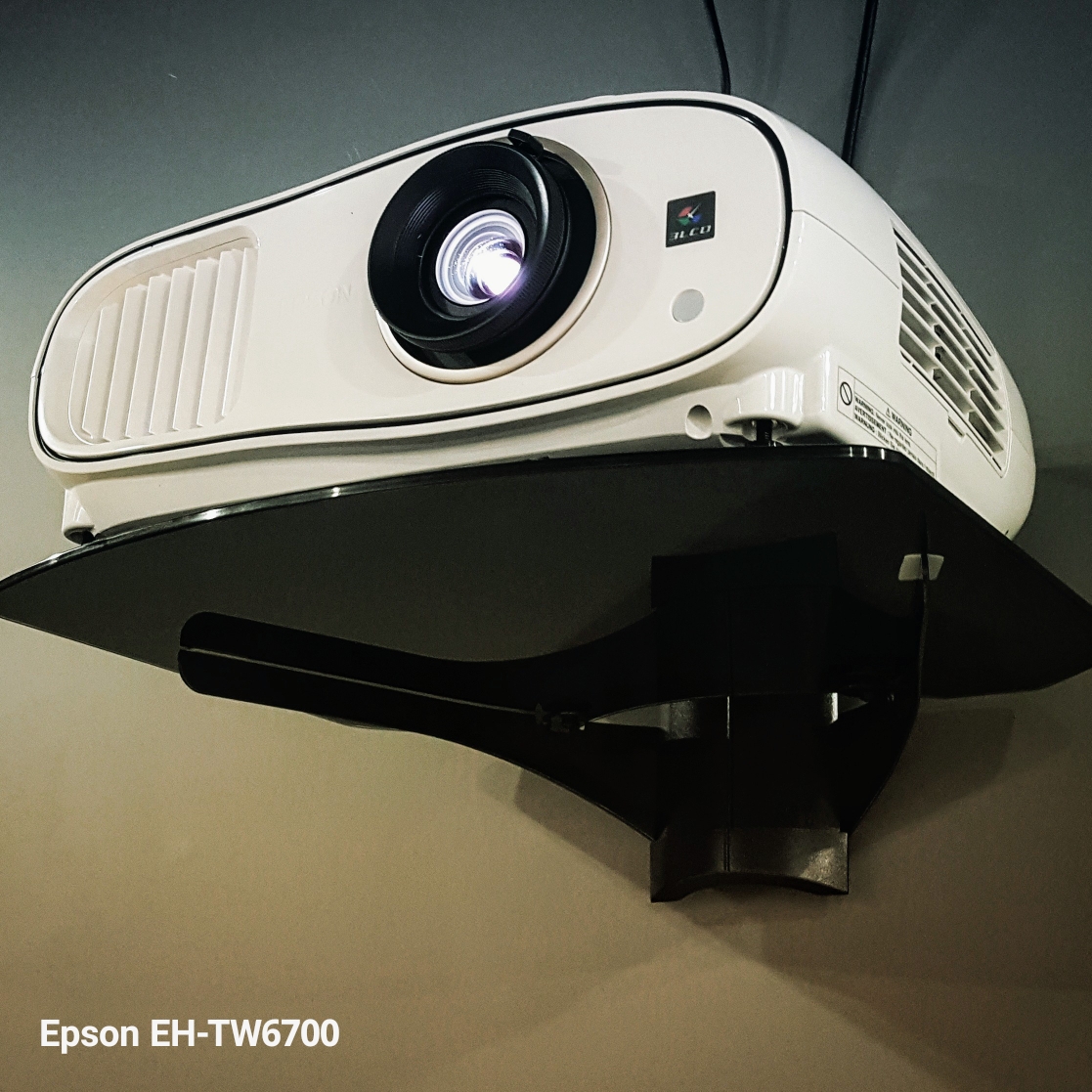
The projector has adjustable feet, which can accurately bring all levels. Optical shift of lenses vertically 60%, horizontally 24%. Zoom 1: 1.6. According to my observations, the shift of the lenses does not noticeably affect the quality of the focus and image.
The brightness of the projector 3000Lm. It is very bright, practically not inferior to the TV (as seen in the photo). At a distance of 2.88m from my lens, I get a diagonal of 98 ". Cinema mode, Eco power consumption. For comparison, the brightness of the sensor measured the phone by white, for 5300 it turned out 380 units, for 6700 - 740 units. At the same time, the blackness of 6700 is less. otherwise, it is more lively and dynamic.
As already mentioned, the projection is carried out on a light gray wall painted with dull paint Dulux. Surely on special screens, the whole thing looks better, but this is by direct comparison, but for now more than that.

General impressions
The Eco mode projector is much quieter than the 5300, a kind of pleasant rustling. In the average mode, this is already a noticeable hum, and in bright sound it becomes too loud for comfortable viewing. Another thing is that there is no desire to include modes other than Eco, for a 100 "diagonal it is more than enough.
The diaphragm is heard only in absolute silence, and if you listen, you can say that it is soundless and this is a big plus compared to the 5300, where it was heard well.
The projector is turned on in about 20 seconds, after which another minute the lamp goes into operation. In the process of turning on the projector turns the cooling system at full speed, this is normal, after a couple of minutes the speed drops to normal.
In all foreign reviews, the 6700 shows extremely good sharpness across the frame. At my place I noticed a slight softness in the upper right quarter of the faucet and along the edges. This is not something that is unsharp, but the difference is noticeable compared to the “ringing” center. This is seen solely on small fonts in Windows and in the films does not appear. It was also necessary to make adjustment of the information matrix (option in the menu) as the red color on the right side of the screen “left” a little. Most likely this is a feature of my sample, so it is better to check with the purchase, if possible.
I will not write much about colors, they are beautiful and you can customize the picture for every taste.
I will dwell on the "difficult" places for the projector. Namely, on those scenes where TVs are shown better. As can be seen from the photo below, this applies to images where you need to display a lot of black gradations. For example, folds on a black coat, the finest details in the shadows. Or, as in this photo, a face painted in black:
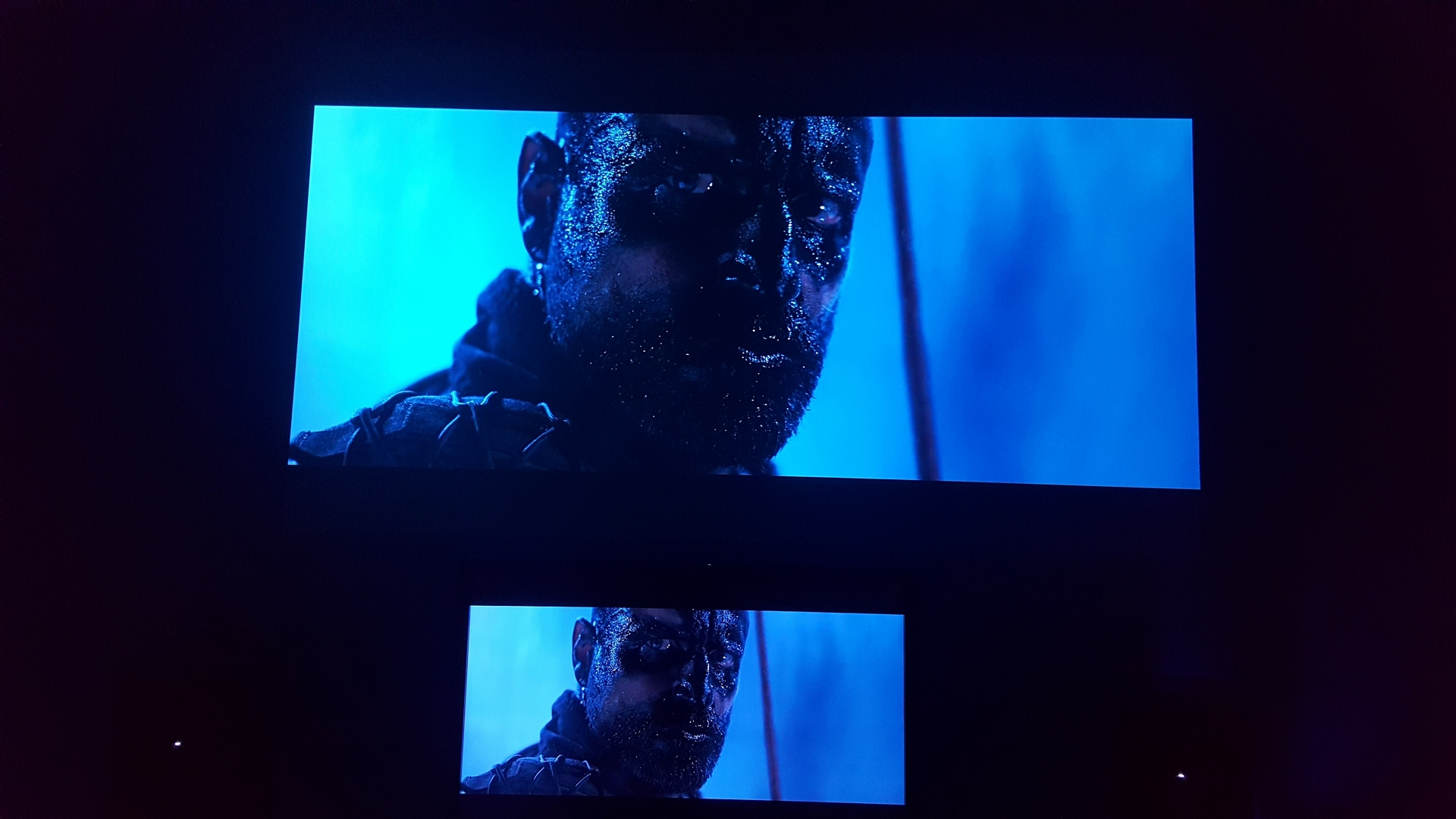
In the photo this is not visible, but in reality on TV in such scenes the details in the shadows are visible a little better. There is a deeper contrast of 4500: 1 in TV versus about 2000: 1 in the projector, and a higher threshold to which you can raise the brightness without sacrificing the depth of black. In the same projector, if you raise the brightness parameter strongly, the brightness of the black areas also begins to grow and the picture fades a little. But such moments are extremely small and they are visible only in direct comparison with TV.
This photo allows you to estimate the black level of the TV and projector Epson 6700:
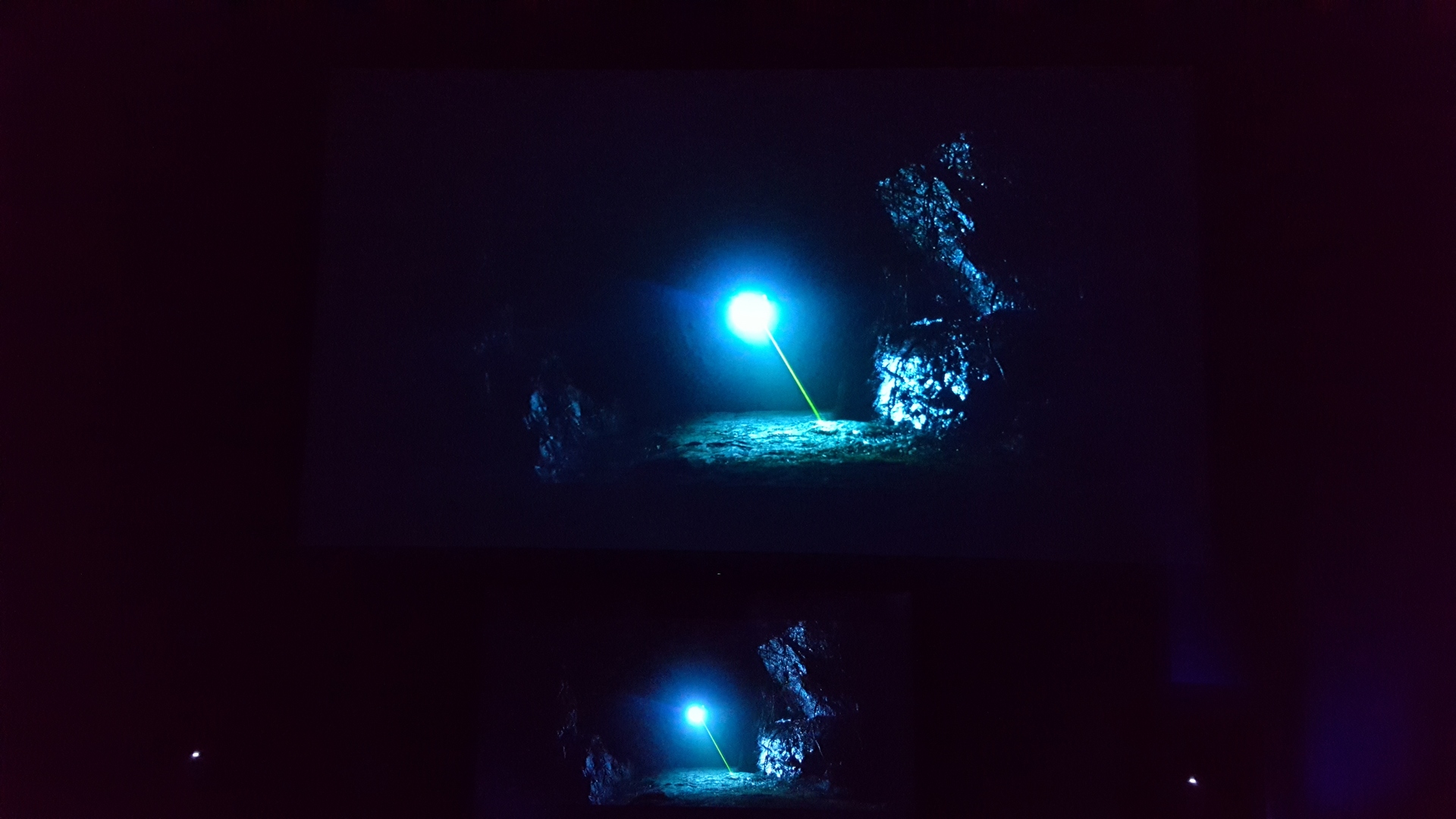
If you open the photo to full screen and look at the black zones. it can be seen that the black at the projector is a little "lit", while at TV it is completely black. Again, it can be seen when comparing and viewing does not interfere. Here is another example for evaluating black levels and contrast:

Consider scenarios when the projector produces a picture that looks better than on TV:

these are, as a rule, scenes with uniform illumination, without too bright or dark objects.
As you have noticed, I do not go into technical details, settings, tables, and so on. This is enough in various foreign reviews (by the way, everything is true there), google it and even if you don’t speak English, Chrome translates into Russian quite well to understand the main points. My review is just sensations, experience and emotions, perhaps not always objective, but honest.
The following photo shows how important it is for the room to be dark. This is not about extraneous light sources in the form of a window in which the night street shines with lanterns or an open door to the entrance hall in which the light is turned on. This should not be the default, and the windows should hang opaque curtains. I'm talking about dark walls, floor and ceiling:
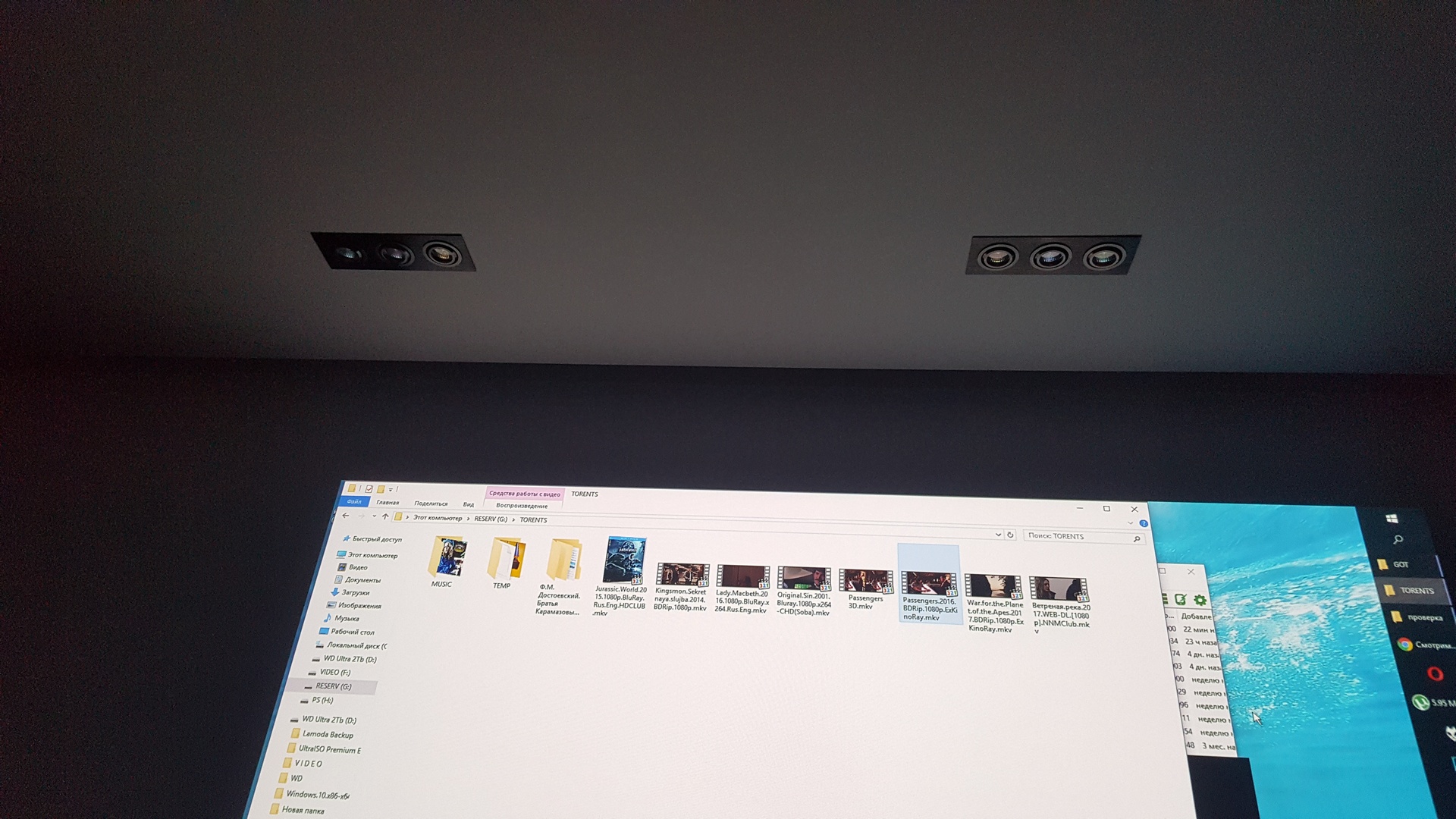
See how much light falls on the screen even from the dark gray ceiling. In this case, white paint would simply turn into a bright lamp and kill all the black in the frame. Therefore, if you decide to buy a more or less decent projector and you will watch it in a regular room with white walls, do not expect miracles and cinematic quality. There are reasons for which in cinemas all surfaces are trimmed with black cloth. And this is one of the most important moments in the home cinema building system.
Competitors
I considered only Japanese brands with 3LCD technology. Products companies Benq, Acer and so on. I did not consider it, because there the technology is different and I have a personal predisposition to the products of such comrades.
Sony projectors with a minimum threshold of entry 140tr. for the Sony VPL-HW45ES model, the main advantage of which is more black color, more uniform picture clarity (another display technology) and a slightly more careful relationship with moving objects in the frame. This is not my experience, but the opinion of foreign surveyors. Is it worth the extra 60tr you decide. Yes, and the replacement of the lamp there is twice as expensive. The advantage of Epson over Sony in greater brightness, lower price, automatic aperture, which to some extent eliminates the difference in contrast between the two projectors.
JVC projectors are famous for their best black color and contrast in the market. But, there are already prices from 350tr. (model JVC DLA-X5500) and the room for such a device must be appropriate.
Total competitors for this price, at least for me, have no Epson 6700. If I bought something more expensive, it would be an Epson EH-TW9300. But he has a longer focal length (I would have a 91 "screen) and it costs ... and 4K is not real there. It is better to wait a year or two until 4 4 true projectors are available. And the content will be more in this resolution.
Total
I am extremely pleased with the projector, so much so that after 3 weeks from the purchase, I still wonder how the light reflected from a simple wall can look so much like a regular TV, only big. Would I recommend it for purchase? Certainly yes. But just prepare a room for him to fully reveal his possibilities, which he has plenty of.
At the end of a small video with a demonstration of dark and light scenes, a comparison with the TV (in the third minute). The camera of the phone has raised colors and contrast, but for general development you can see.